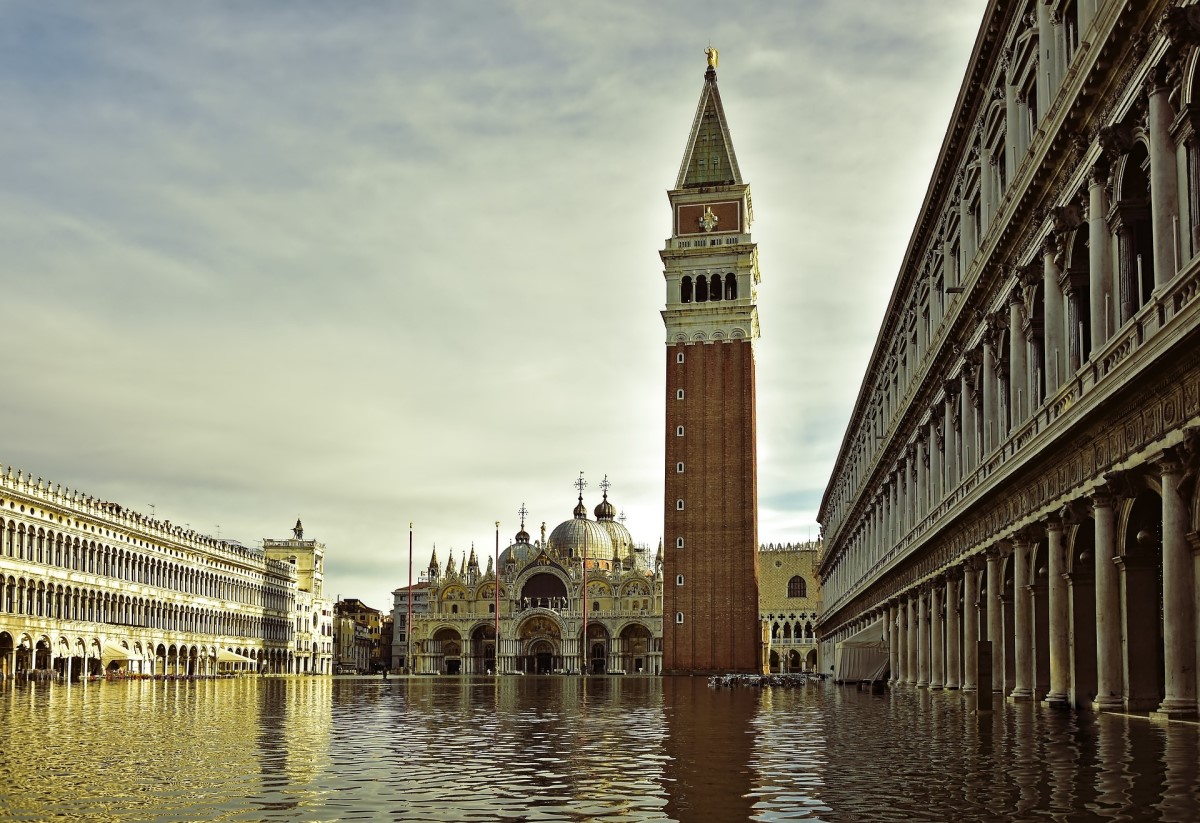- Home
- Videos Of Venice
- Venice Flooding
Join A Secret Italy
You come to Italy thinking it will be a trip. You leave knowing it was a beginning
Why is Venice Flooding?
The flooding in Venice has been getting dramatically worse over the last ten years. But now they have a "solution." I'll get onto that shortly, but first a little bit of background...
There has always been flooding in Venice; it has mostly been caused by spring and autumn high tides. It gets significantly worse when those tides coincide with the Bora and Sirocco winds, but never has it occurred with the frequency and intensity of recent times.
Is somebody to blame? Well, yes and no.
A lot of people instantly say it is global warming, and, while that may be a part of the problem, most of the issues stem from other manmade interventions over the years. Some of the most significant being
- The building of a deep channel for oil tankers to reach Marghera.
- Expanding Marghera itself, which entailed the removal of various small islands that acted as sponges.
- Connecting Venice to the mainland with the rail/road bridge.
- Building a car and bus terminal at the end of the bridge on the Venice side.
- Diverting the Brenta River, the river used to soak up extra water during high tides.
The decision to persist with cruise ships is another factor.
Despite many organizations, including UNESCO, warning of the damage being caused to the Venetian Lagoon, the economic benefits were put before the future of Venice itself.
What is the problem with cruise ships in Venice?
Well, the wake of huge ships passing close to the city undermines the very foundations of Venice. It isn't just the cruise ships; those speedboat taxis also cause damage.
Some good news.
Action has now been taken to limit the size of cruise ships entering into Venice via the Giudecca Canal and the Bacino di San Marco (the area that passes by St. Mark's Square).
It is still not enough.
Many fairly large ships still enter the lagoon—both cruise ships and commercial ships.
The other problem is that Venice is slowly SINKING. Once, they believed this was caused by the extraction of groundwater.
They stopped the extraction. The sinking continues.
Venice's Plan to Stop Flooding
Venice's hopes now rest on the MOSE: the hugely expensive flood barrier designed to protect Venice.
It was a project conceived in the 1980s and finally approved in 2003. Ever since then it has been beset by cost overruns, seemingly endless delays, political interference, and arrests for corruption and fraud.
Now, it is operating.
But the MOSE barrier won't stop minor floods so scenes of flooding in St. Mark's Square will always occur. What the barrier is supposed to do is stop the severe flooding that has become significantly worse over the last few decades. Six of the ten highest tides ever recorded occurred in this period.
However, the risks remain.
The MOSE flood barrier can only operate for short periods, as tidal flow is needed to keep the lagoon healthy. Therefore, if there should be a long-term rise in water levels, which many experts are predicting, then the MOSE will not be the solution.
Perhaps it is too late to save Venice? Perhaps, whatever we do, there is no way to stop Venice from sinking below the waters of the Adriatic.
I hope not.
I really believe every effort must be made to save one of the greatest manmade wonders of the world.
A Few Questions Answered About Venice Flooding
Is Walking Barefoot in Venice During Acqua Alta a Bad Idea?
Yes, it is. Here's why:
Dirty Water: The floodwater in Venice can be pretty filthy. It’s a mix of canal water, sewage, and street debris, which can contain all sorts of unpleasant things. Exposure to dirty water can lead to infections, cuts, and scrapes. If you have any open wounds, the risk of infection increases significantly.
Hidden Hazards: You can’t see what’s beneath the water. There could be sharp objects, broken glass, or uneven surfaces that can cause injury.
Temperature: During Acqua Alta, the water is often cold, especially in the fall and winter months. Walking in cold water can be very uncomfortable and can lead to issues like hypothermia if you’re not careful.
What should I wear during the flooding in Venice?
Chic Rubber Boots: Embrace the Venetian vibe with colorful rubber boots. Go for a pair with a fun pattern or bright colors to make a splash (pun intended). They’ll keep your feet dry and add a bit of personality to your outfit.
Stylish Raincoat: Choose a raincoat that’s not only waterproof but also fashionable. Think bold colors or classic trench styles. A raincoat with a hood is a bonus, saving you from the hassle of juggling an umbrella.
Waterproof Bag: Keep your essentials dry with a waterproof backpack or crossbody bag. Look for something compact but spacious enough to carry your daily needs.
In which months does Venice flood?
In which months does Venice flood?
Historically, the worst months have been November, December and February although flooding can occur in other months too.
What is the Italian name for Venice flooding?
What is the Italian name for Venice flooding?
Acqua Alta, which means high water.
Please Book with Us... Maria here, if you enjoy my site I'd love your support.
Simply book your next trip anywhere (not only to Italy) via the link below or with any of the hotel links on the website.
You'll get the best deal available and the income I receive helps me to remain independent and to keep bringing you more of beautiful Italy.
More Travel Tips:
- Book your tickets to museums and other attractions in advance on Tiqets.com
- Book your accommodation. Booking.com and Agoda help you to book accommodation in advance
- Book your excursions. Wherever you go, make the most of your time! Excursions with professional guides will help you do this - choose a location and the best option for yourself on Viator or Getyourguide
- Book your car. At least a month before is best. Use Discover Car Hire.
- Cash Back on Flights: Great deals & money back with WayAway
- Get peace of mind when traveling. Get insured with VisitorsCoverage.com
- Home
- Videos Of Venice
- Venice Flooding















New! Comments
Have your say about what you just read! Leave me a comment in the box below.